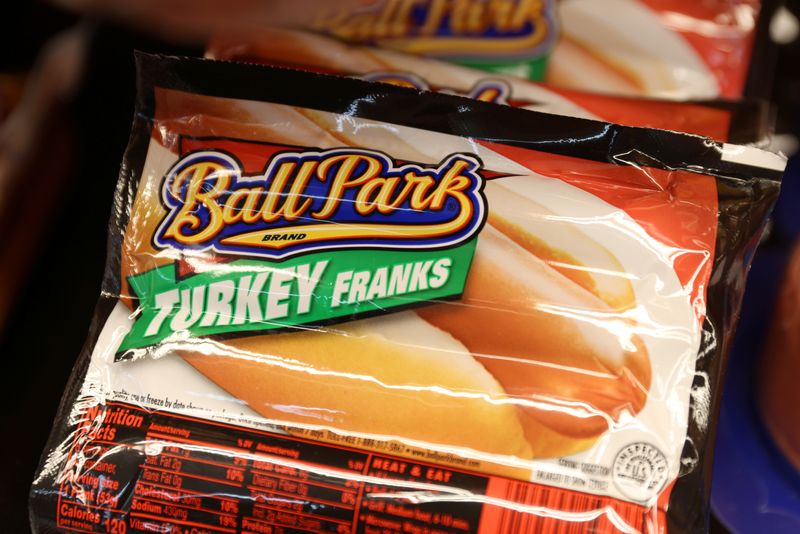
(Reuters) -Tyson Foods raised its annual sales forecast on Monday as robust demand for its beef and chicken products helped the meat packer beat estimates for first-quarter results, sending its shares up 4% in premarket trade.
The company also lifted its annual adjusted operating income forecast to between $1.9 billion and $2.3 billion, from $1.8 billion to $2.2 billion expected earlier, driven by lower prices of animal feed and efforts to cut costs and streamline operations.
A gradual recovery in restaurant traffic is boosting the company’s wholesale supply to fast-food and fine-dining chains, while sustained eat-at-home trends are fueling demand for its meat products.
That has helped demand for beef, Tyson’s biggest business by sales, withstand stubbornly high prices driven by tight cattle supplies in the United States.
The U.S. company expects fiscal 2025 sales to be flat to up 1%, compared with its prior forecast of flat to down 1%.
Prices for U.S. corn and soy futures have rallied after touching 2020 lows last year, but remain relatively cheap, making it less expensive for Tyson to fatten chickens for meat.
Sales in Tyson’s beef segment rose 6.2% in the first quarter ended Dec. 28, as cattle are being raised to heavier weights and more were slaughtered, with prices up 0.6% and volumes growing 5.6%. Chicken volumes rose 1.5%.
In a point of concern, President Donald Trump imposed tariffs on goods from Mexico and Canada over the weekend, a move that could further push up beef prices and input costs as the U.S. imports cattle from both neighbors, analysts said.
The duties could also hurt export demand for Tyson’s pork and poultry if they trigger retaliation on American products. Mexico is the biggest export market for U.S. pork, and reduced purchases could leave more supplies in the U.S. market.
Tyson’s net sales rose 2.3% to $13.62 billion in the first quarter, compared with analysts’ estimates of $13.44 billion, according to data compiled by LSEG.
On an adjusted basis, the company earned $1.14 per share, compared with estimates of 88 cents.
(Reporting by Neil J Kanatt in Bengaluru and Tom Polansek and Heather Schlitz in Chicago; Editing by Devika Syamnath)

